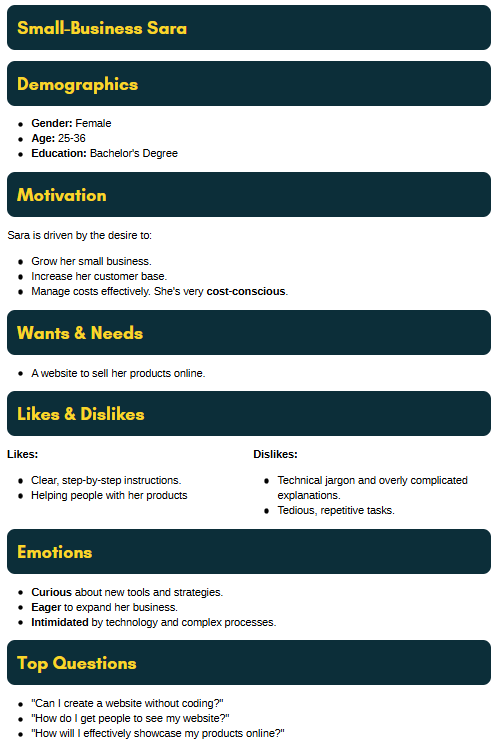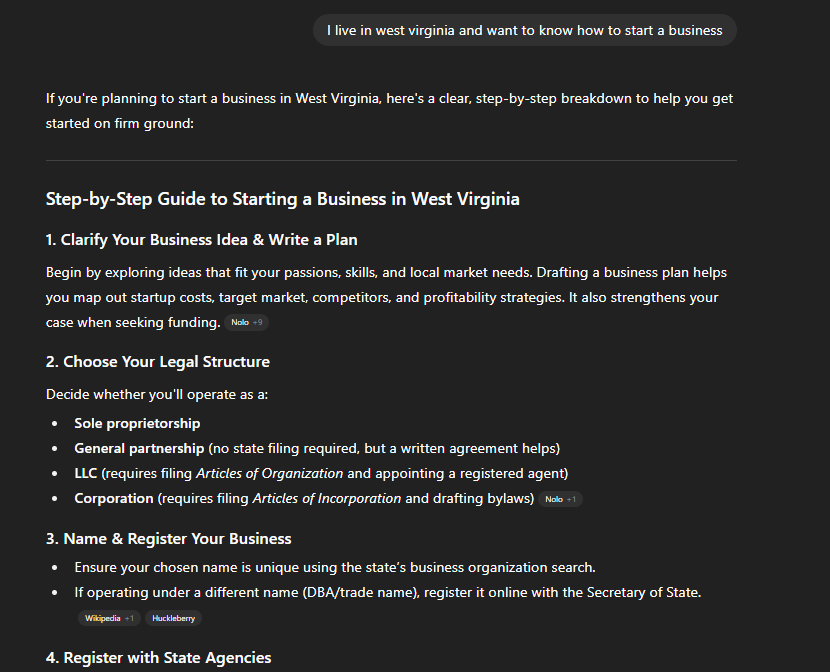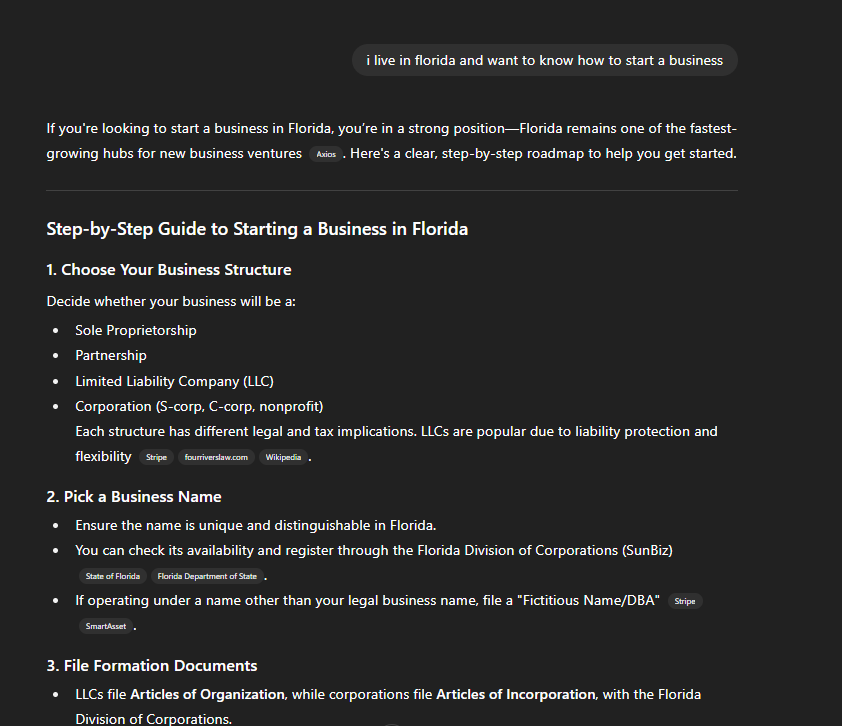SEO personas for AI search: How to go beyond static profiles

Simplified personas built as fictional characters with broad pain points are outdated in the future of search.
Think “Curious Cathy,” who just wants to learn more about your product, or “Technical Tom,” who has years of experience in his field and can handle more detailed breakdowns.
Static personas once helped, but they no longer reveal enough about real people to stay competitive.
AI search demands smarter personas
AI is getting better at understanding people – their needs, context, and intent.
As search becomes more personalized, so should your personas.
By layering in real-world data – like location, industry trends, or other environmental factors – you can create personas that reflect the actual people behind the queries.
This richer context makes your content more relevant and increases the chances that AI will surface it when your audience is searching.
The current state of SEO personas
Personas for SEO have always been how we attempt to define user intent. They cover:
- Basic demographics.
- Motivations.
- Wants.
- Likes.
- Dislikes.
- Emotions.
- Questions.
But some personas are created only through the lens of a specific product, limiting our understanding of the people behind the queries.
Take a look at this hypothetical, simple persona of a small business owner.

Look familiar?
This persona structure is still helpful, especially for user journey mapping.
It gives you clues on tone, style, and even which questions to answer for Small Business Sara.
That’s a strong start. But in the AI-powered search landscape, tone and topics aren’t enough.
High-level and simplified persona models miss that your target customer is more than just your target customer.
They are living, breathing people, all influenced by outside factors that need to be considered when tailoring content to their needs.
So, what’s missing?
Data on Sara’s environment and what makes her a real human is missing.
You don’t know what’s going on in Sara’s world that could be influencing her intent, needs, and decision-making process when she types in a query.
When crafting our personas, ideally, we would:
- Conduct user interviews and testing to help dig into Sara’s life a bit more.
- Find a group of “Saras” who will provide similar answers and tell us about “her” life.
Most of us lack the time, budget, or resources to do this, though, leaving us with a knowledge gap we still need to fill.
If you gathered small business owners from similar industries and asked them to list the steps they took to start, you’d probably get similar answers.
If you think about it from a contextual perspective only, sure.
But if you listen more closely, you’ll likely notice a difference in the order they did things and what answers they found valuable at each stage.
And this order, likely influenced by their environment, impacts what they do and don’t know when they land on the content you assumed would fit their journey.
How environmental factors influence search intent
Environmental factors are going to be complex and difficult to capture in their entirety.
Let’s explore just how one piece of additional data can provide a little more insight that you might be able to leverage.
Someone in Florida, which has the highest per-capita rate of business owners, will have different needs behind the query “how to start a business” than someone in West Virginia, where that rate is the lowest.
A person in Florida is statistically more likely to know someone who’s started a business, giving them easier access to information and inspiration.
In 2024, there were just over three business applications per 100 adult residents, according to Census data.
In West Virginia, where there was only one new business application per 100 adults, the story is different.
A business owner there may have some personal connections, but starting a business is a more novel, less familiar path.
They’re more likely to need guidance on the fundamentals, like business plans and logistics.
While both Saras may search “how to start a business,” what they need from that query isn’t the same.
- The Floridian Sara is probably ready for logistical steps – forming an LLC, building a website – thanks to greater exposure and access to resources.
- West Virginia Sara, on the other hand, needs foundational information first: what a business plan is, how legal structures differ, or where to find funding.
Same question, different needs.
You can’t capture every detail shaping a person’s intent.
Still, even a simple environmental context like this can help you interpret it more accurately – and build personas that feel more human.
Here’s how the intent behind the keyword shifts based on this environmental knowledge:
| Small Business Owner in Florida | Small Business Owner in West Virginia | |
| “How to start a business” | Lives in the state with the highest per-capita rate of business owners.
In 2024, there were 3 new business applications per 100 adult residents. Looking for the logical order of logistical steps to take to get a business up and running. Is familiar with most of the jargon, and is more likely to jump into action with a clear list. |
Lives in a state with the lowest per-capita rate of business owners.
In 2024, West Virginia reported about 1 new business application per 100 residents. Looking for more foundational insights, like: Has no idea what any of these things are yet, and isn’t ready for the steps. Needs more education before taking any action. |
You can argue that you have the content that ultimately fits both of these intents.
But is that content ranking for “how to start a business”? Or is it featured in LLM responses or AI Overviews?
I know my related content isn’t.
It’s ranking for “how to write a business plan” and “steps to getting an LLC,” because SEO until now has been about mastering a query, not tailoring your content to a user’s environment.
In my “deprecated” SEO strategy, I have a pillar page for “how to start a business” that covers everything from business conception to making your first sale.
I’ve got dozens of internal links with beautiful anchor text to every supplemental guide Sara needs. Google loves it.
This is where my traditional approach to content needs improvement.
While it’s written for what I consider to be the user, it’s still focused on being thorough enough that Google puts me at the top, and not considering other outside factors that might influence search needs.
Get the newsletter search marketers rely on.
See terms.
How AI factors context into search responses
If you doubt that location changes the needs behind ‘how to start a business,’ compare prompts with and without location in incognito chat.

Now, take a look at how it changes when I say I live in Florida.

It’s a subtle difference, but when you say you live in West Virginia, ChatGPT suggested clarifying your business idea and proper planning as the first step.
In Florida, it dives right into business structure.
While AI doesn’t already have everyone’s environmental context in memory, when the user includes context in prompts, ChatGPT attempts to adjust its response.
Assuming everyone searching for “how to start a business” is looking for the same info might let you rank in a traditional blue-link search result.
However, this example shows that this shift to context-driven prompts influences how AI generates a response.
This is just one data point. A full strategy needs deeper environmental context than business applications or economic stats alone.
What this means for content strategies
AI search – whether through AI Overviews or LLMs – is built to reduce the cognitive overload of digging through multiple articles, clicks, and follow-up searches.
It leverages user context to deliver a succinct, relevant answer.
Take the earlier example: you could create 51 articles for every state and Washington, D.C.
In traditional search, that might help you rank for “how to start a business in (state).”
I’ve done this – customizing each article with state-specific agencies and forms – but without weaving in the deeper context of what’s happening in those states.
- Traditional SEO still depends on comprehensive coverage, query mastery, and strong site structure to win blue-link rankings.
- But AI retrieval and AI Overviews weigh context, clarity, and modular chunks of information that can be pulled into responses.
Both matter – they just reward different optimizations.
The goal isn’t to overhaul your entire strategy overnight.
Start testing ways to incorporate more context over time. Revisit your core content and weave in focused examples or localized insights.
Not every topic needs a “personalized” version.
Instead, find places where you can speak to your audience more directly, whether through localized callouts, customer-focused CTAs, or targeted subsections within existing content.
With clicks declining across the board, optimizing for conversion when you do get traffic is critical to proving the value of search.
Even if you’re focused on just one “Sara,” you still need to understand which end of the spectrum you’re targeting – and adjust your content to meet that audience where they are in the moment.
Digging deeper into environmental data helps you prioritize information gain – the key to becoming the most valuable answer a platform can surface.
The more clearly you understand who you’re creating for, the better positioned you are to deliver that value.
Environmental data isn’t the only input that matters. It’s one piece of a holistic persona-building approach.
The real advantage comes from layering these insights with conversion data, click and impression metrics, rankings, LLM visibility, and referrals.
Environmental context is simply one more tool in a stronger, more adaptive strategy.
Start by enhancing the data you already have
Hopefully, your personas are already rooted in data.
But what kind of SEO would I be if I didn’t ask for more data?
Adding environmental data from third-party sources helps you stand out, prioritize opportunities, and reach the right people at the right time.
It’s most powerful when combined with multiple data sources, environmental factors, and qualitative insights.
Scaling your approach
Digging into every persona or segment at once can be overwhelming.
- Start small: choose one persona and one or two environmental factors to explore.
- Use that real-world context to adjust a few pieces of content, then test and measure the impact.
Focus on small, incremental adjustments for long-term gains, not a full content overhaul.
The suggestions below are meant to show you where to start – not to imply you need to do it all at once.
Data exploration options
The data you need to understand environmental context rarely lives in-house.
Your BI team can share valuable insights on where you’re winning or growing, but external sources will help you transform personas into richer, more actionable profiles.
First, make sure your base persona includes core demographics such as:
- Age.
- Gender.
- Race.
- Location.
- Education level.
- Income.
If you’re missing these basics, start with publicly available data like the U.S. Census, Bureau of Labor Statistics (BLS), or Statista.
For example, in the business-owner scenario, I used Business Formation Statistics from the Census and population estimates.
The Census Annual Business Survey program also provides insights like:
- Business owners’ age.
- Education.
- Country of birth.
The BLS can help you see which states are experiencing growth in new businesses, while Census tables provide demographic breakdowns for those states.
And if you know your target industry, Labor Force statistics can help you understand the age ranges most active in that space.
While this example focused on location as an environmental factor, age alone is another strong starting point.
There’s ample research on what each generation values, fears, and prioritizes at different stages of their careers.
Here’s a list of environmental questions you can aim to answer and how that might inform your strategy:
| Question | What it will tell you | Potential sources |
| Where is this business or industry most popular? Is my target demographic in an oversaturated, undersaturated, or normal market? | This helps give some insight into the competitive nature of your target audience and the resources they might have access to. | Bureau of Labor Statistics, Industry-specific reports |
| What are the common problems this industry faces? What’s in the news related to this space? | Things like tariffs, over-saturation, demand for your persona’s product or service, lack of consumer awareness, etc.
Are all the environmental factors that can be used in examples in your content and CTA opportunities to better speak to your audience? |
Google News searches, Industry-specific websites |
| What challenges does this demographic face in their personal and professional life? What norms is this group trying to beat? | Understanding things like pay gaps, underrepresentation, and cultural challenges influences how someone makes a decision and the tone you can use to resonate with them. | Pew Research, Census Newsroom, Google News, Academic Research |
| What does this demographic value? What are their personal beliefs? | If you can dig into what your audience stands for and cares deeply about, you can use this in your marketing content to speak to them in a way that resonates with their beliefs. People don’t buy what you do, they buy why you do it. |
Pew Research, Consumer Studies like Kantar |
| What websites does this audience visit? | Knowing the websites they visit and the way these websites communicate can also give context. | SimilarWeb, Semrush Audience Insights |
If you’re already a power creator – or have the budget – paid tools like Semrush, SimilarWeb, or Kantar can deliver deep audience insights.
If not, free sources like Census Data Tools, BLS tables, and some old-fashioned desktop research are still excellent for uncovering the data you need to better understand your audience.
Enriching personas with environmental data
Combine internal data with public sources to identify your top demographics and refine user journey mapping.
Environmental research helps you tailor content to real needs instead of covering everything broadly.
When layered with behavioral signals, technical SEO, and testing, these insights multiply visibility and conversions.
Marketers may not master the human mind, but we excel at interpreting data.
Apply that skill to strategy: focus on context, clarity, and information gain so your content becomes the answer AI and users trust.
Strong technical fundamentals still drive rankings, but environmental context boosts your chances of surfacing in AI responses.
Amid all the AI hype, the cornerstone of search is still the person behind the persona.







Recent Comments